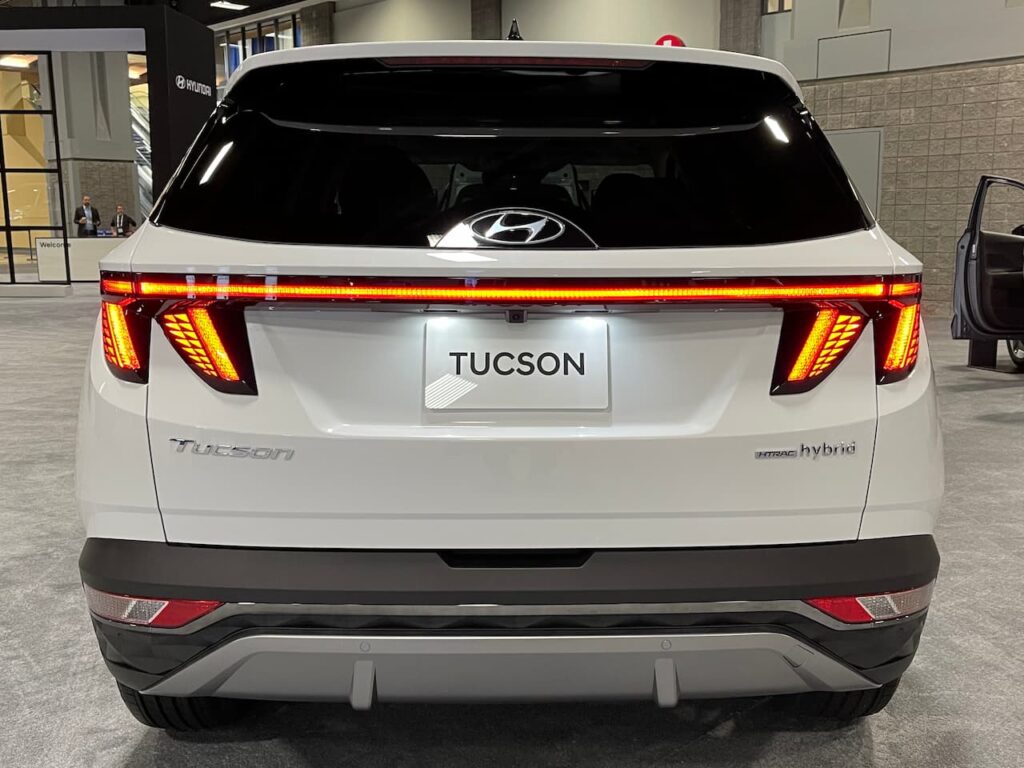South Korean outlet ETNews had reported in October 2024 that development of the next-gen Hyundai Tucson (codename: Hyundai NX5) had commenced, and that its release was set for the first half of 2026 in the local market.
In our earlier story, we presented information and our expectations for its design, features, and powertrain. We expected it for MY27 or MY28, arriving in the U.S. late next year. Little was known about the future hybrid compact SUV’s interior. That is until now, as the company has announced the ‘Pleos Connect’ infotainment system at its developer conference in Seoul on March 28, 2025.
20+ mil Hyundais to use Pleos Connect
Hyundai hasn’t confirmed which vehicle the Pleos Connect would debut on, but notes that it would be launched in Q2 2026 in-vehicle. Furthermore, it has confirmed that it would deploy it in no less than 20 million vehicles by the end of 2030. This pretty much confirms that every Hyundai vehicle either during a generational change or a facelift will adopt Pleos Connect in the next 5 years.
Pleos is Hyundai’s new mobility software platform, and Pleos Connect is the next-gen infotainment system under this umbrella. It will replace the ccNC (Connected Car Navigation Cockpit) and ccNC Lite systems used in the current Tucson family.
New Features
Pleos Connect is based on Android Automotive OS, with customizable features. It is an open and scalable Android development environment, with improved compatibility with mobile apps. It features a smartphone-like UI with split-view and multi-window functions, and includes ‘Gleo AI’ voice-controlled intelligent vehicle assistant.
Additionally, Pleos Connect comes with personalized services using ‘Pleos ID’ where one connected profile is accessible in all Pleos Connect vehicles.
Physical Buttons
During our time in the Tucson Hybrid and Tucson Plug-in Hybrid models early last year, we had two complaints. The gloss black bezels on the center console proved to be a fingerprint magnet, and the shortage of physical buttons proved to be a bit annoying. With the facelift (MY2025), Hyundai addressed both areas, redesigning the Tucson’s center console area for practicality.
However, more can be expected in this area. Simon Loasby, Hyundai’s Senior VP of Design and Head of Hyundai Design Center, told Autocar on the sidelines of the Seoul Motor Show 2025 that future interiors would balance physical buttons and digital displays.
While the infotainment system would allow deeper interaction through additional interface layers, he said that physical buttons will ensure that drivers keep their hands on the wheel and their eyes on the road when operating frequently-used functions.
TMED-II Hybrid Powertrain
As explained in our previous story, the next-gen Hyundai Tucson Hybrid is set to migrate the TMED-II hybrid powertrain which debuted in the new Palisade Hybrid. While we’re expecting the engine displacement to be lower than the 2.5L unit in the bigger SUV, the core features and benefits would carry over.

TMED-II promises significantly improved fuel economy and performance, smart regenerative braking, adjustable comfort levels, and V2L capability. The system includes a ‘Stay’ mode, preserving battery charge for selected navigation destinations. Both hybrid and plug-in variants should retain the six-speed automatic and standard HTRAC AWD.



